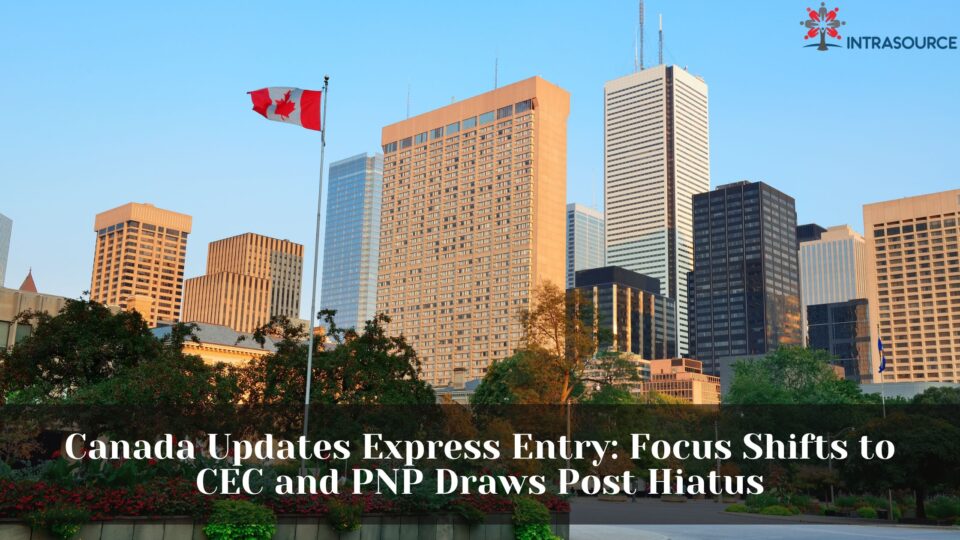Canada’s Express Entry draws have made a strong comeback after a significant pause, with noticeable changes in the pattern of invitations. After sparse draws in May and June 2024, the frequency has returned to normal, but with a new emphasis.
The absence of ‘General’ category rounds marks a clear shift. Back in March, Immigration Minister Marc Miller announced that the focus would move towards facilitating temporary residents transitioning to permanent residency. Hence, more attention is on domestic draws and Provincial Nominee Program (PNP) allocations.
Increased Emphasis on CEC and PNP Draws
This strategic pivot prioritizes the Canadian Experience Class (CEC) and PNP draws, targeting skilled workers with Canadian work experience who are usually already residing in Canada. The aim is to control new immigration levels and alleviate pressure on healthcare and housing systems.
Draw Analysis
The trend in July and August confirms this targeted approach. The draws aim at managing inflation in immigrant numbers by focusing on those already integrated within Canada’s labor market.
Express Entry
Express Entry remains the federal system managing applications for permanent residence through three economic immigration programs: the Federal Skilled Worker Program, Canadian Experience Class (CEC), and the Federal Skilled Trades Program. The ranking is based on a Comprehensive Ranking System (CRS) score, where top candidates receive invitations to apply for permanent residence—a process similar to obtaining a green card in the USA.
Types of Draws Explained:
According to Immigration Refugees and Citizenship Canada (IRCC), three main types of rounds occur throughout the year:
- General Round of Invitations: For top-ranking candidates eligible under any of the three programs.
- Program-specific Rounds: For highly ranked candidates from a particular program like PNP.
- Category-based Rounds: Targeting top candidates within specified economic categories, such as healthcare professionals.
Here’s a table summarizing the draws from August:
| Serial No | Date | Nature of Draw | Number of Invites Issued | CRS Cut-off |
| 1 | Aug 13 | PNP | 763 | 690 |
| 2 | Aug 14 | Canadian Experience Class | 3,200 | 509 |
| 3 | Aug 15 | French Language Proficiency | 2,000 | 394 |
| 4 | Aug 26 | PNP | 1,121 | 694 |
| 5 | Aug 27 | Canadian Experience Class | 3,300 | 507 |
Pathway to Canadian Permanent Residency – CRS System
Aspiring candidates are evaluated based on a score under the Comprehensive Ranking System (CRS) in each draw. Those who meet or surpass the cut-off score receive an invitation to apply (ITA) for permanent residence, akin to a green card in the USA, which can eventually lead to Canadian citizenship.
The CRS score is partitioned into two segments. The core score, which can reach up to 600 points, is determined by factors such as age, education, language proficiency, and work experience. An additional 600 points can be awarded for meeting specific policy or other objectives like possessing a provincial nomination, a qualifying job offer, Canadian educational credentials, French-language proficiency, or having a sibling in Canada.
Candidates invited to apply have 60 days to either decline the invitation or submit an online application for permanent residence to Immigration, Refugees and Citizenship Canada (IRCC). Following due process, successful applicants and their families become permanent residents.
Notably, immigration experts highlight that the cut-off scores remain high—typically above 500 points—except for category-based draws like French proficiency or occupation-specific draws. Recently, IRCC introduced a pilot program that offers Francophone students in Canada a direct pathway to permanent residency under the Express Entry system.


